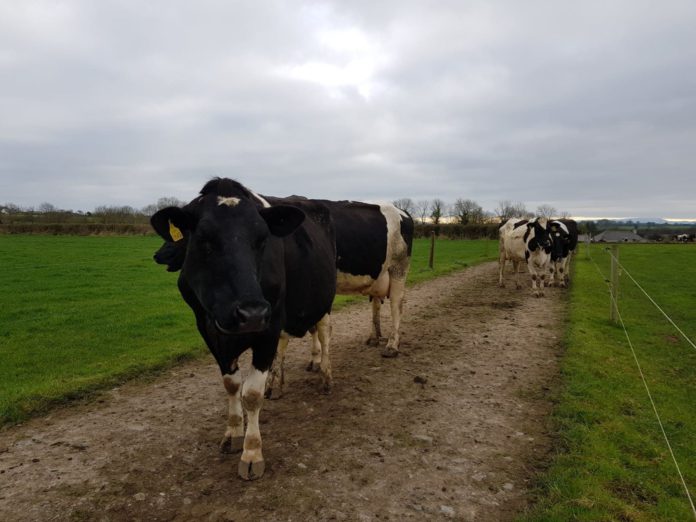Some farmers will be “severely” impacted by 2023 cow banding rules to the point where they may have to “reduce stock numbers or secure more land to compensate for the increase in loading that they are going to have”.
That is according to Teagasc’s Ger Shorthall, who appeared on RTÉ Radio 1’s Countrywide programme, presented by Philip Boucher-Hayes, to discuss the aim of the measure which is contained in the country’s fifth Nitrates Action Programme.
Cow banding
The programme, according to a statement from the government, contains specific measures to protect surface waters and groundwater from nutrient pollution arising from agricultural sources.
One such measure is cow banding, a term which we have commonly heard over recent months, which essentially bases the nitrogen (N) excretion rate from dairy cows on the herd’s average milk yield.
Up to now, the standard Irish cow was assumed to produce 89kgs of organic nitrogen per year, but this year, the excretion rate per cow can be either, depending on the herd’s average milk yield:
- 80kg;
- 92kg;
- 106kgs.
According to Shorthall, banding, which has been introduced across most EU member states at this stage, recognises that there are different dairy cow types – more productive and less productive – which has led to the creation of a three-band system, with high, medium and low.
He explained: “So depending on where your average cow fits into, your organic nitrogen rating will change. What that change will impact the amount of land you need to be compliant with the regulation.”
“The higher the band you go into, the more land you need. So, some farmers will be unimpacted because they are in or around the average figure, but some will be quite seriously impacted.”
“If you are into the high category, you are into a significant increase of land area required; either that or you find some other way, as there are a number of strategies.”
“There are a number of ways you can go about it. It is likely to lead to an income reduction, either through increased costs or lower sales, one or the other or a mix of both.”
Land availability and cost
He said that “more than likely”, many farmers will acquire, through purchase or rental, land that is “not next door to them”, so they will be probably may not be grazing their cows on some of this land, but could shift some of their other production to that land.
For example, they may shift the rearing of their replacement heifers to that land, so it is, he explained, effectively, reducing the stocking rate of that land, or they may take their silage from that land and transport slurry to the away farm.
He added: “In most cases, the land rental cost is so high that I think very few farmers can afford not to use land that they are renting.”
“Therefore, I think in the majority of cases, they will use that land in some way.”
“However, theoretically, you could have land that sits there doing nothing and does not make any difference to your stocking rate, but I think that would be the rarity rather than the routine way of doing it,” he concluded.





